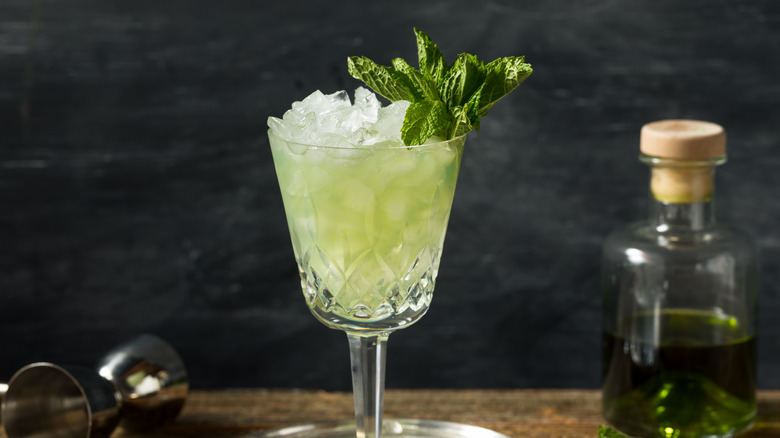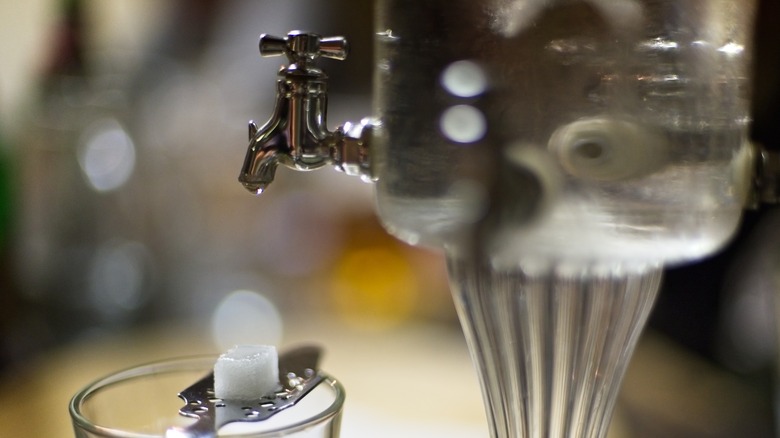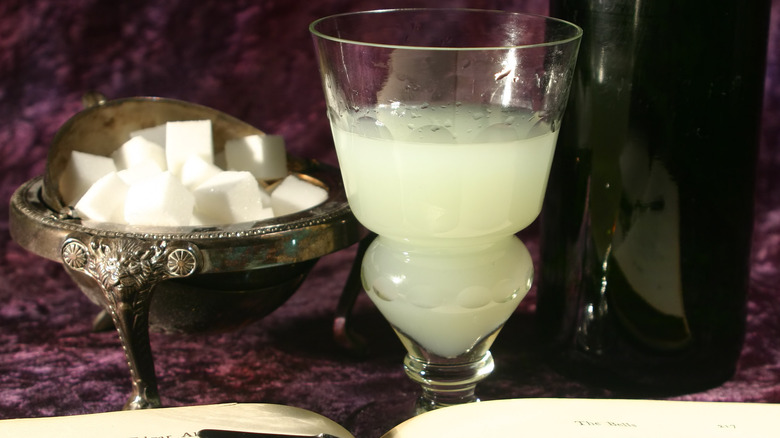Absinthe's 'Louching' Effect And What It Can Tell You About Your Bottle
Ah, the dreamy green goddess that is formally known as absinthe. The uniquely green liquor is readily associated with old European lore of wild shenanigans and floaty hallucinations, which made it an easy target to be banned, even long before cancel culture was a phrase. But this only added to the mystery of the magical spirit, making it a more sought-after and valued drink.
Absinthe could not escape the fame for its intense, intoxicating effects that quickly ignite euphoria. While it was a rare find, it was still accessible, sometimes brought back by the bold after European excursions. In 2007, the U.S. ban on absinthe was lifted, and the drink has since been reborn.
The once-elusive bright green beverage is now commonplace, and while that is generally a positive thing, it also means the absinthe market is saturated with low-quality versions. If you want to know if your bottle of absinthe is legit, you will want to pay close attention when you prepare it for consumption.
How to drink absinthe
Absinthe is VIP at the bar and even gets its own ice water fountain. As such, it expects to be treated with extra TLC and savored in slow, short sips.
Swigging a double ounce of absinthe is not recommended if you are a straight-shooting drinker. Neither is simply pouring it into a mixed drink; absinthe needs to be adequately prepared, not just for safety's sake but also for the sake of full flavor and enjoyment.
Absinthe is comprised of three key ingredients — wormwood, fennel, and anise. To taste these wondrous flavors in all of their glory, you will need a few tools and ingredients — a jigger, a drinking glass, a perforated absinthe spoon, a sugar cube, and slow-dripping ice-cold water. This is where those fancy absinthe fountains come into play, but an eyedropper or careful pouring with a funnel or carafe will do, too. And if you don't have an absinthe spoon, you can substitute it with a tea strainer.
First, you measure one part absinthe for every three-to-five parts ice water. Pour the liquor into the glass and place the sugar cube on the spoon over the glass. Then, as you slowly drip the water over the sugar, it dissolves into the now-diluted drink. Cheers!
What is 'louching'?
Unless you are a mixologist, chemist, or an anise drink aficionado, you may not have heard the word "louche" before. Louche is a French word derived from the Latin word luscus. Both versions loosely translate to 'poor vision,' a literal definition that has since evolved to a figurative form meaning shady or devious (due to the squinty eyes of both the nearsighted and sinister).
But when we talk about absinthe (and other similar liquids), louche takes on its original meaning referring to the physical and tangible. In this case, louche refers to the cloudy translucent appearance of finely prepared absinthe.
When water is slowly added to the absinthe, a chemical reaction occurs known as the louche effect, and the bright green drink transforms into a liquid opalescent cloud. This happens as the water separates the essential oils, bringing forth those aromatic herbs of anise, fennel, and wormwood. The colder the water, the more the drink will louche.
If your absinthe clouds after preparation, you can know it was made authentically with the proper traditional ingredients. If the green drink does not louche, it was likely made inauthentically with subpar ingredients. So, the cloudier your absinthe, the better the quality.


